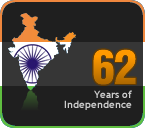1. Present Situation
The situation in the state is not conducive to good decision making at present. No side is ready even to listen to the other side. People and the leaders are not clear in stating the concerns and issues that are the root cause of their discontent. Efforts to create at least a window of opportunity for the crisis managers to salvage the situation are very few and completely uncoordinated. Conspiracy theorists and mongers of despair are having a field day in the state. This is resulting in ‘People-to-people hatred’ and saner voices are becoming
irrelevant with each passing day.
2. Perceived Injustice
Common perception in the state is that the voices of non Telangana people were never heard. I am not saying it is true but this is the perception I am noticing everywhere. The leaders and people from Non-Telangana region are feeling that they were taken for granted. This perceived injustice and Hyderabad City as main bone of contention are the basic reasons that are getting manifested in various forms of arguments that are complicating the situation in the state.
Till recently the Non-Telangana leaders were restrained as they were asked not to escalate tensions. Suddenly when they realized that the decision is made, there is a feeling of complete neglect and marginalization of them. There were angry reactions from the people of other regions. Unfortunately our leaders instead of leading the people in the right direction were actually following the mob psyche.
In fact the people were mentally prepared for the separation of the state in due course of time but expected that they will get a chance to express their concerns. Unfortunately for us people did not look at the assembly debate on the resolution as a forum to voice their concerns. The collective wisdom in the state is showing that the situation during Mr. KCR’s fast is not as grave as it was believed to be portrayed. Many people are feeling that a small piece of favorable statement would have brought the fast to a close. The surprise expressed even by supporters of Mr. KCR shows that the bargain he got was hugely in his favor at the cost of congress party.
My read of the political situation suggests that the impact of a sudden announcement and the need for it was not conveyed to the central leadership appropriately. The party leadership in the state is expected to carry the inputs and impact on the other regions of the state along with the one line resolution from the CLP. Unfortunately it is being perceived by majority of non-Telangana people that the state leadership has only taken a piece of paper but not the spirit behind the paper to Delhi.
Once we address the above described perception of injustice, we can address the remaining political and administrative issues/concerns easily.
Once again it reminds us that, in politics it is not enough to do the right things but we should also be seen as doing the right things.
3. Other Concerns and Issues
- Hyderabad City is the main contentious point in the whole episode. People from different regions of the state have their role in the development of the city and have woven their future with that of the city.
- Stereo typing of Non-Telangana people as exploiters and colonizers as done by TRS is one of the main reasons for the emotional backlash in the other regions.
- Concern on the plan of separation, and time frame is confusing the people on all the sides.
- Future of irrigation projects and sharing of water resources, mechanism for protection of investments in various regions
Complete polarization of the state on the lines of region can be attributed to a large extent to the lack of statesmanship and vacuum in the political leadership. This is true for all the parties but we need to address it in our party. MLAs are just following the demands of the people. None of them are showing the gumption to be the thought leaders. At present nobody is in a position even to listen to different views. In a more generic description of this problem, most of our MLAs are just bound by their group and regional loyalties but not by ideological and policy bonding.
Personally, I was disappointed when the official party meetings are conducted region wise for the MPs. Leaders at the level of an MP shall be matured enough to be open amongst themselves at least in party forums. But I reserve my conclusions on this to a future date until I understand more about our politics and am sufficiently experienced.
At this moment, there is no leader in the state whose sense of justice inspires a degree of trust in the eyes of all the sections. The problem is a result of lack of political leadership in the state.
5. Basis for a solution
I am sure we will find a solution to this problem and we will be solving much complicated problems also in future. However, we need to ensure that all the stakeholders understand the basis on which our solution is going to be built and they should work on their side to get an acceptable solution with in a basic framework.
I am proposing the following as the basis for a solution to this problem:
- Democratic and just aspirations of any section of the society cannot be bulldozed by majority
- Sentiments and emotions are taken into account while taking decisions and will be accommodated to the extent possible but sentiments and emotions cannot form the basis for our decisions
- Peace and order shall be ensured in the state before we take any steps. No move that fuels hatred in people is acceptable All parties shall take a clear stand and make it public.
- Large sections of the society cannot be hold to ransom by a few sentiments
- A list of critical issues to be agreed by all stakeholders on which an honorable solution shall be eked out. All parties shall agree that the next steps will be taken only after a consensus on critical issues
Within the above framework I propose the following action plan in a phased approach:
Restoring Normalcy
- Eminent people of the party shall give a call to the people to get back to their daily routine and assure them that all the interests will be taken care of.
- Party leaders shall take lead in restoring normalcy and calling off public movements. Leaders shall issue a call to the people that they will voice their concerns.
- Our MLA’s and MPs from both regions shall issue a joint statement and shall start functioning together. The leaders shall be asked to demonstrate it publicly.
- Make a gesture that boosts the confidence in both regions. (May be we can give national status to a project in each region)
- A few leaders of eminence shall tour both the regions and hear the voices and concerns of all the stakeholders
- Call for a special session of the assembly for 3 or 5 days just for discussion on the Telangana issue. This will allow the opinions to come out.
- Engage the stakeholders in preparing the list of critical issues
- Establish a commission that verifies the feasibility of a solution for all critical issues
- Address the basic questions raised in the next section of this report and start policy interventions at the national level
- Communicate a vision on how the life of common citizen gets better and gather public support for the idea
This crisis has thrown some very basic and important questions for us to ponder.
- Why only Hyderabad city witnessed so much of development that it became the main issue of contention? This opens up the question on regional disparities. Perhaps, we need to think of a policy to treat these big cities on par with critical installations not belonging to any one state or region. I can see the pattern that warrants it through Mumbai and Hyderabad. We need to review the devolution of power to different levels with more urgency
- Why were the general public in all the regions silent when the parties took a stand? And why were the people suddenly turned against the stated positions of the parties? Statements and positions of political leaders do not have much credibility in the eyes of the people. This is a grave danger to our democracy that shall be addressed.
- Why did our party leadership in the state fail to gauge the people’s mood? Ability to read the peoples mood and sound judgment to choose between different alternatives are the basic qualities for a political leader. Our party organization is blinded by divisive politics on the lines of their respective groups, castes and regions. It is evident that the analysis communicated to our central leadership is way off the mark in accuracy and degree of the gravity. While this can happen once in a while, we need to ensure that the leaders own the accountability for their misreading and are ready to pay the political price.
- What are the ways and means for the citizen to express their protest other than through vandalism? It is time for all of us to think about a mechanism at the national level that facilitates registration of protest by citizens. We cannot have the amount of destruction and the number of torched busses as the only measure of discontent. Executive in this country shall start taking notice of civilized protests and shall act on them. Otherwise we are just encouraging people on the wrong path.
- On crucial issues we should be putting efforts in carefully taking the issue to the people just as we did in the case of 123-agreement. Issuing gag orders and relying on information from few people is complicating the matters and is weakening our democracy. I personally feel that the rationale behind our position of appointing a 2nd SRC would have been well received by the people had we tried hard enough to explain.
- Political read and the ability to grasp the pulse of people by our state level leadership and MLAs is found wanting
- We need to put more emphasis on preparedness in the party while taking critical decisions
- There is a huge difference in the level of intellect between the first and the second line of leadership in the party. We need to address this at the earliest through good training.
This report is a sincere attempt to objectively analyze the situation. The main intent is to bring out the injustice perceived to the party so that the party can address it suitably. I have full confidence in the leadership of Congress party and am hopeful of a solution as I know better people than me are handling the crisis. I am just fulfilling the duty of a congressman by providing my analysis to the party.

